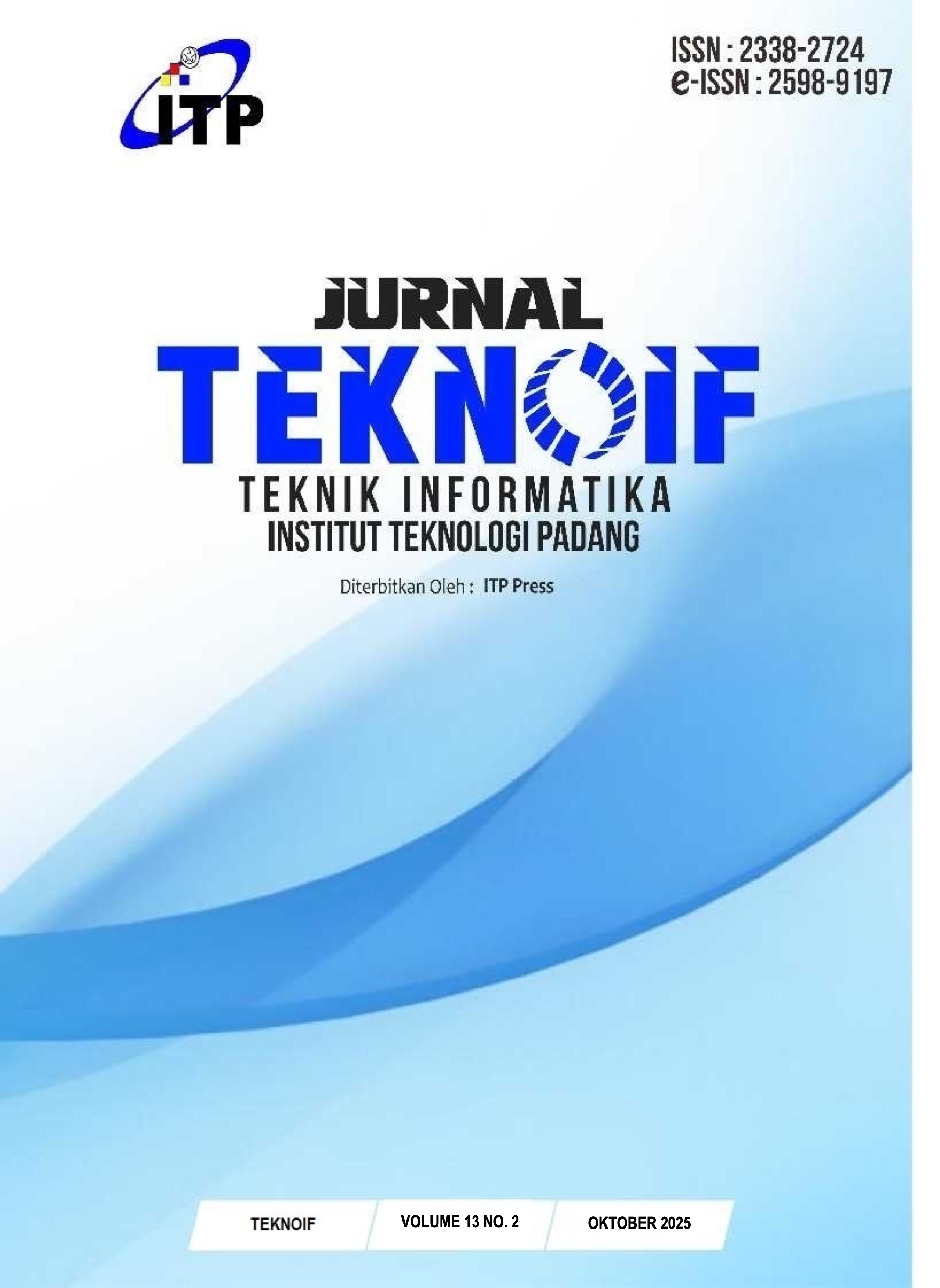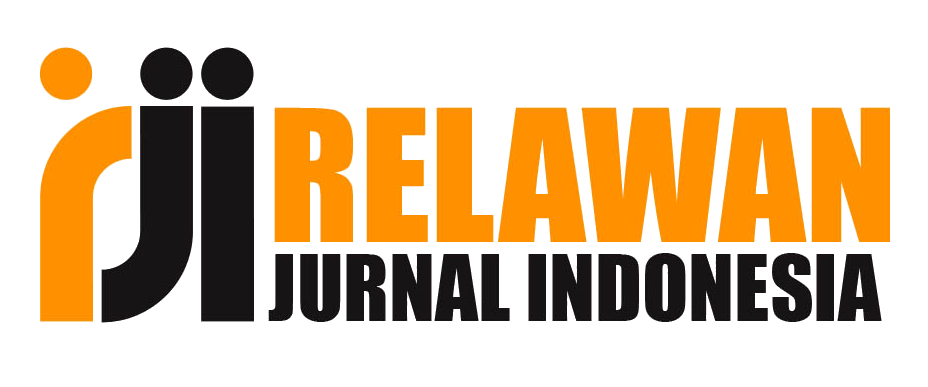COMPARISON OF MACHINE LEARNING CLUSTERING ALGORITHMS FOR ANALYSING ELECTRICITY USAGE PATTERNS IN CAMPUS AREAS
DOI:
https://doi.org/10.21063/jtif.2025.V13.2.87-96Keywords:
electricity consumption, campus area, clustering algorithm, machine learningAbstract
Electricity consumption in campus environments varies based on building functions, occupancy patterns, and time-of-day usage. Understanding these variations is essential for efficient energy management. Uncontrolled electricity use often results in high operational costs, highlighting the need for accurate methods to uncover consumption patterns. This study analyzes electricity consumption data from multiple campus buildings at a polytechnic in Jakarta during 2023 and 2024. Each dataset consists of six columns and 365 rows in a year. Since the data is unlabeled, three clustering algorithms: K-Means, Hierarchical Clustering, and DBSCAN are applied to identify usage patterns across campus areas. Pre-processing included imputation and normalization, followed by clustering. Cluster quality was evaluated using the Silhouette Score. A key novelty of this study is the year-to-year comparative analysis, showing that clustering performance can vary significantly depending on data structure and noise. The 2023 dataset (dataset 1) achieved the highest Silhouette Score of 0.48 using DBSCAN, while the 2024 dataset (dataset 2) produced the best result with Hierarchical Clustering at 0.53. These results emphasize the importance of selecting clustering methods based on data characteristics and temporal context. The findings contribute to developing adaptive, data-driven strategies for managing energy use in non-residential settings, particularly in educational institutions like campuses.
References
[1] A. Shahcheraghian and A. Ilinca, “Advanced Machine Learning Techniques for Energy Consumption Analysis and Optimization at UBC Campus: Correlations with Meteorological Variables,” Energies, vol. 17, no. 18, p. 4714, Sep. 2024, doi: 10.3390/en17184714.
[2] M. Alnahhal, O. Antar, A. Sakhrieh, and M. Al Hazza, “Analyzing Energy Consumption in Universities: A Literature Review,” Int. J. Energy Econ. Policy, vol. 14, no. 3, pp. 18–27, May 2024, doi: 10.32479/ijeep.15517.
[3] H. Yesilyurt, Y. Dokuz, and A. S. Dokuz, “Data-driven energy consumption prediction of a university office building using machine learning algorithms,” Energy, vol. 310, p. 133242, Nov. 2024, doi: 10.1016/j.energy.2024.133242.
[4] W. Wu, Q. Deng, X. Shan, L. Miao, R. Wang, and Z. Ren, “Short-Term Forecasting of Daily Electricity of Different Campus Building Clusters Based on a Combined Forecasting Model,” Buildings, vol. 13, no. 11, p. 2721, Oct. 2023, doi: 10.3390/buildings13112721.
[5] I. B. Sulistiawati, A. Soetedjo, F. Y. Limpraptono, and S. Priyanto, “K-Means Clustering of Electricity Consumption from IoT Data: A Case Study in Electrical Engineering Department Building, ITN Malang,” in 2023 IEEE International Conference on Communication, Networks and Satellite (COMNETSAT), Malang, Indonesia: IEEE, Nov. 2023, pp. 434–440. doi: 10.1109/COMNETSAT59769.2023.10420576.
[6] A. M. Alonso, F. J. Nogales, and C. Ruiz, “Hierarchical Clustering for Smart Meter Electricity Loads based on Quantile Autocovariances,” IEEE Trans. Smart Grid, vol. 11, no. 5, pp. 4522–4530, Sep. 2020, doi: 10.1109/TSG.2020.2991316.
[7] G. E. Okereke, M. C. Bali, C. N. Okwueze, E. C. Ukekwe, S. C. Echezona, and C. I. Ugwu, “K-means clustering of electricity consumers using time-domain features from smart meter data,” J. Electr. Syst. Inf. Technol., vol. 10, no. 1, p. 2, Jan. 2023, doi: 10.1186/s43067-023-00068-3.
[8] Assistant Professor, Department of Computer Engineering Institute of Science, Karadeniz Technical University, Turkey, M. Qasimi, A. F. Nasrat, and Master student at Computer science, Gazi Üniversitesi, Turkey., “IoT Sensor Network Electricity Consumption Behaviour Using ClusterAnalysis Algorithm for Network Environment,” J. Sens. IoT Health Sci., vol. 2, no. 3, pp. 46–58, Sep. 2024, doi: 10.69996/jsihs.2024016.
[9] J. Liu, “Cluster Analysis of Electricity Consumption Characteristics and Electricity Consumption Behavior of Typical Industry Users,” in 2023 5th Asia Energy and Electrical Engineering Symposium (AEEES), Chengdu, China: IEEE, Mar. 2023, pp. 1389–1395. doi: 10.1109/AEEES56888.2023.10114302.
[10] B. Nepal, M. Yamaha, H. Sahashi, and A. Yokoe, “Analysis of Building Electricity Use Pattern Using K-Means Clustering Algorithm by Determination of Better Initial Centroids and Number of Clusters,” Energies, vol. 12, no. 12, p. 2451, Jun. 2019, doi: 10.3390/en12122451.
[11] J. Yang, K. Liu, Z. Deng, M. Zhang, and L. Gong, “Intelligent anomaly detection method for power and electricity data based on cubic exponential smoothing model,” J. Phys. Conf. Ser., vol. 2666, no. 1, p. 012039, Dec. 2023, doi: 10.1088/1742-6596/2666/1/012039.
[12] G. Yao, C. Guo, Q. Ge, and M. Ait‐Ahmed, “A practical building energy consumption anomaly detection method based on parameter adaptive setting DBSCAN,” Cogn. Comput. Syst., vol. 3, no. 2, pp. 154–168, Jun. 2021, doi: 10.1049/ccs2.12015.
[13] Y. Cui, Z. Zhu, X. Zhao, and Z. Li, “Energy Schedule Setting Based on Clustering Algorithm and Pattern Recognition for Non-Residential Buildings Electricity Energy Consumption,” Sustainability, vol. 15, no. 11, p. 8750, May 2023, doi: 10.3390/su15118750.
[14] S. M. Miraftabzadeh, C. G. Colombo, M. Longo, and F. Foiadelli, “K-Means and Alternative Clustering Methods in Modern Power Systems,” IEEE Access, vol. 11, pp. 119596–119633, 2023, doi: 10.1109/ACCESS.2023.3327640.
[15] M. Li, Z. Wang, Y. Qu, K. M. Chui, and M. Leung-Shea, “A multi-year campus-level smart meter database,” Sci. Data, vol. 11, no. 1, p. 1284, Nov. 2024, doi: 10.1038/s41597-024-04106-1.
[16] J. Chen, J. Yuan, W. Chen, A. Zeb, M. Suzauddola, and Y. A. Nanehkaran, “Research on Interpolation Method for Missing Electricity Consumption Data,” Comput. Mater. Contin., vol. 78, no. 2, pp. 2575–2591, 2024, doi: 10.32604/cmc.2024.048522.
[17] M. Liu et al., “Handling missing values in healthcare data: A systematic review of deep learning-based imputation techniques,” Artif. Intell. Med., vol. 142, p. 102587, Aug. 2023, doi: 10.1016/j.artmed.2023.102587.
[18] J. Peng, J. Hahn, and K.-W. Huang, “Handling Missing Values in Information Systems Research: A Review of Methods and Assumptions,” Inf. Syst. Res., vol. 34, no. 1, pp. 5–26, Mar. 2023, doi: 10.1287/isre.2022.1104.
[19] A. A. Abdulnassar and L. R. Nair, “Performance analysis of Kmeans with modified initial centroid selection algorithms and developed Kmeans9+ model,” Meas. Sens., vol. 25, p. 100666, Feb. 2023, doi: 10.1016/j.measen.2023.100666.
[20] S. Mutrofin, T. Wicaksono, and A. Murtadho, “Perbandingan Kinerja Algoritma Kmeans dengan Kmeans Median pada Deteksi Kanker Payudara,” vol. 5, no. 1, 2023.
[21] N. Hendrastuty, “Penerapan Data Mining Menggunakan Algoritma K-Means Clustering Dalam Evaluasi Hasil Pembelajaran Siswa,” J. Ilm. Inform. Dan Ilmu Komput. JIMA-Ilk., vol. 3, no. 1, pp. 46–56, Mar. 2024, doi: 10.58602/jima-ilkom.v3i1.26.
[22] T. Li, A. Rezaeipanah, and E. M. Tag El Din, “An ensemble agglomerative hierarchical clustering algorithm based on clusters clustering technique and the novel similarity measurement,” J. King Saud Univ. - Comput. Inf. Sci., vol. 34, no. 6, pp. 3828–3842, Jun. 2022, doi: 10.1016/j.jksuci.2022.04.010.
[23] A. Zahra and N. Asghar, “Clustering Algorithms: An Investigation of K-mean and DBSCAN on Different Datasets,” 2023.
[24] J. Ghanim, M. Issa, and M. Awad, “An Asymmetric Loss with Anomaly Detection LSTM Framework for Power Consumption Prediction,” in 2022 IEEE 21st Mediterranean Electrotechnical Conference (MELECON), Jun. 2022, pp. 819–824. doi: 10.1109/MELECON53508.2022.9842895.
[25] A. A. Abdullah et al., “Advanced Clustering Techniques for Speech Signal Enhancement: A Review and Metanalysis of Fuzzy C-Means, K-Means, and Kernel Fuzzy C-Means Methods”.
[26] A. K. Abdulsahib, M. A. Balafar, and A. Baradarani, “DGBPSO-DBSCAN: An Optimized Clustering Technique Based on Supervised/Unsupervised Text Representation,” IEEE Access, vol. 12, pp. 110798–110812, 2024, doi: 10.1109/ACCESS.2024.3440518.
[27] G. Vardakas, I. Papakostas, and A. Likas, “Deep Clustering Using the Soft Silhouette Score: Towards Compact and Well-Separated Clusters,” Feb. 01, 2024, arXiv: arXiv:2402.00608. doi: 10.48550/arXiv.2402.00608.
[28] V. Michalakopoulos, E. Sarmas, I. Papias, P. Skaloumpakas, V. Marinakis, and H. Doukas, “A machine learning-based framework for clustering residential electricity load profiles to enhance demand response programs,” Appl. Energy, vol. 361, p. 122943, May 2024, doi: 10.1016/j.apenergy.2024.122943.
[29] A. Hilmani, Y. Sabri, A. Maizate, S. Aouad, and M. Koundi, “Integration of K-Means and Silhouette score for energy efficiency of wireless sensor networks,” Int. J. Reconfigurable Embed. Syst. IJRES, vol. 14, no. 1, p. 26, Mar. 2025, doi: 10.11591/ijres.v14.i1.pp26-34.
[30] S. K. A. Ashgar, L. Gungat, A. M. Sarman, and N. Bolong, “An Evaluation of Sustainable Campus Guidelines in Energy Management Context”.
Downloads
Published
Issue
Section
License
Copyright (c) 2025 Diya Namira Purba, Muhammad Ridha, Rida Indah Fariani, Harkiapri Yanto

This work is licensed under a Creative Commons Attribution-ShareAlike 4.0 International License.
This journal is licensed under a Creative Commons Attribution-ShareAlike 4.0 International License (CC BY-SA 4.0).
Authors retain copyright and grant the journal the right of first publication.
The work may be shared and adapted, even for commercial purposes, as long as appropriate credit is given and any new creations are licensed under the identical terms.
















